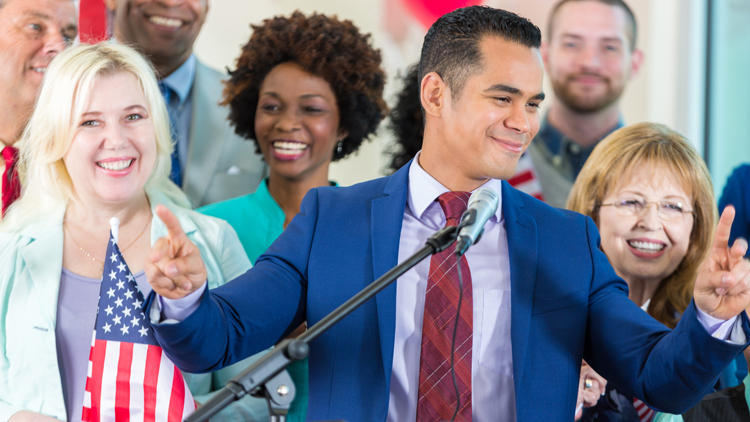For Whom and What Do We Vote?

In elections, Americans vote on many things. Most frequently, they vote for candidates who run for government offices, such as mayor, governor, and president. Candidates must first meet the requirements of the elected office. These may include a minimum age requirement and status as a permanent resident of a city or state for a certain amount of time. Prospective candidates must also produce the required number of signatures of residents in the place they wish to run for office.
Candidates are frequently members of political parties. A political party is an organization of like-minded individuals with similar values who hope to advance a set of shared policy outcomes. These shared policy outcomes are often voted on by party members and expressed in the party’s platform or agenda. Knowing a candidate’s political party can help voters identify where the candidate stands on key issues. Before facing a candidate from a different party, a candidate might run in a primary election. In a primary election, candidates of the same political party compete against one another. The winning candidate will represent the party in the general election where they face candidates from opposing parties.
Voters also decide on ballot measures. Typically, voters are presented with a question such as, “Should a new dog park be built?” Voters respond yes or no. To appear on the ballot, a potential question must receive the required number of signatures from state or city residents, just as candidates must.
As you discuss whom and what we vote for, ask students:
- Why do you think there are requirements to run for office, such as collecting signatures?
- Do you think requirements are needed?
Photo Credit: SDI Productions/E+/Getty Images



